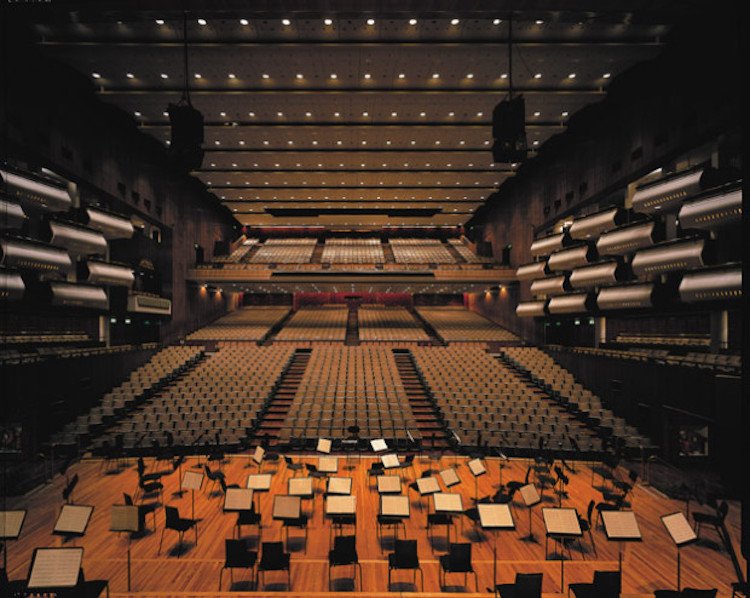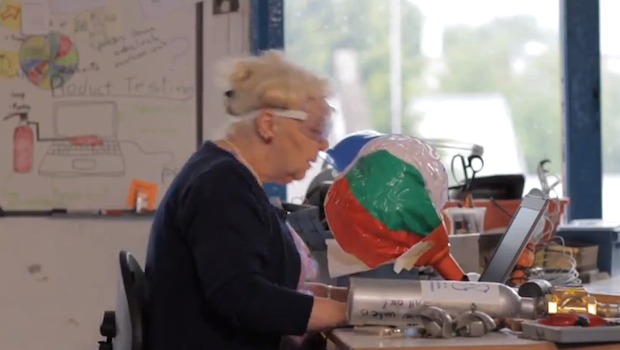Everyday there are churches building new sanctuaries or upgrading their sound systems. Often times these projects fall on inexperienced shoulders. As a result, churches are charged above average rates for equipment that is installed in a sub-par fashion. Having an understanding of equipment, electronics, and how to put a sound system together is about all the knowledge most installers have. Truly understanding acoustics and how sound behaves in a room is a rare quality. These four tips will help to determine how your sound system should be installed—or re-configured.
1. Phase
One of the strangest behaviors of sound is what is called “phase”. When two sound waves play at the exact same time from two different locations, they come perfectly into phase. When this happens the sound wave double in amplitude. (This is the basis for nearly all feedback issues.) Conversely, when two exact sound waves are played slightly out of sync from each other, or 180 degrees out of phase, that sound wave is completely cancelled out and will not be heard.
2. Parallel Walls Are Bad
I know I’ve mentioned this before in other articles but its worth repeating. Anytime there are parallel walls in a room, there is a good chance quite a bit of phasing will happen. Whether its right to left, front to back, floor to ceiling we need to accommodate for parallel walls.
With sound, the angle of incidence equals the angle of refraction. This is a technical way of saying sound reflects at the same angle it hits. When we create an environment where sound can bounce back and forth with parallel walls its easy for certain frequencies to get trapped (not in a good way) and can cause your sound system to perform poorly.
3. Subs on the Floor
Sub-woofers push all the low end in your sound system. The way speakers are designed the actual box of the speaker is nearly as important as the cone that moves the air. Each cabinet that houses a speaker is actually tuned to maximize the output of that speaker. Sub woofers are designed not only to resonate the cabinets they are built in, but to resonate the entire room they are in. This makes the room a part of the speaker itself. By hanging a speaker from above or even mounting them high, that resonance is greatly reduced. By keeping your subs on the floor you’ll always get the best low end out of your system.
4. Dispersion Angle
Every speaker—whether its a sub, horn, etc—has an angle of dispersion. Often times this information can be found in the user manual. There will always be a horizontal angle and a vertical angle. Its important to note when your speaker is turned sideways. Using a protractor we can visually line up where the edge of the direct sound will begin to fade out. By lining up the edges so that no direct sound is ever wasted on a wall, we can maximize the amount of sound coming out of our system.
Do you have any other acoustic tips for setting up whole home audio or a church sound system?
Write your comments below!









One thing people often overlook is that shiny surfaces reflect sound as well. My church used to be (back in the 60’s and 70’s) packed to the rafters in attendance, and to handle that it has a balcony with wooden-backed chairs. Since the church isn’t as populated as it used to be, those seats are empty and their shiny, concave surfaces act as sound reflectors.
Also, consider the paint on the walls of your sanctuary. We used to have a matte paint in ours, but sometime over the years someone has painted with a semi-gloss. All that surface area now acts much the same as the seats in the balcony.
Great point Tim! I’ll even expand on that a little further, hard surfaces are more reflective than soft surfaces. For churches that struggle with hard surfaces, I recommend hanging large banners or canvas pictures. This acts as common ground between being practical and keeping the sanctuary beautiful. Similarly, covers can be made for seat backs that slide over them. This thin barrier of cloth works wonders to control sound!
Great article Tommy. It’s so interesting how the variables of sound are more expansive than people realize.
Thanks Michael!
Installing high-quality acoustic panels can majorly increase the acoustic quality of your church. The panels absorb particular frequencies of sound that are unpleasing and reflect back the rest. As a result, your sound system gives a better output.